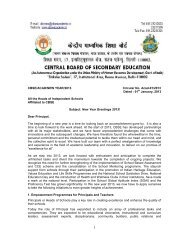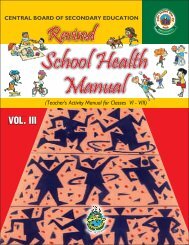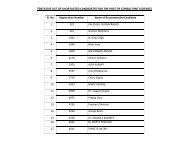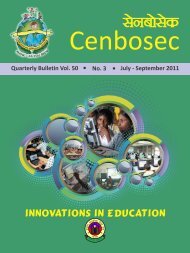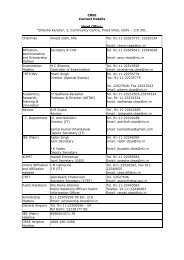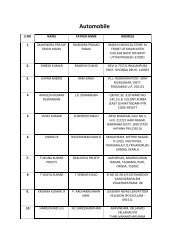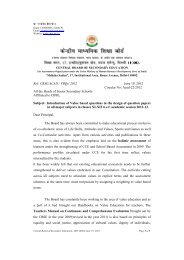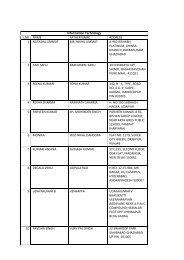CCE Manual VI - VIII - CBSE
CCE Manual VI - VIII - CBSE
CCE Manual VI - VIII - CBSE
You also want an ePaper? Increase the reach of your titles
YUMPU automatically turns print PDFs into web optimized ePapers that Google loves.
Continuous and Comprehensive EvaluationChapter 4<strong>Manual</strong> for TeachersAssessing Co-ScholasticAreasCollecting Evidence and InterpretingLearning in Scholastic and Co-Scholastic Areas isdemonstrated by change of behaviour in the learner.Behaviour is of two kinds – covert and overt. Overtbehaviour is the outer expression of covert behaviour.As a teacher, you can judge a student only by his/her overt behaviour. For example, understanding iscovert; you really do not know whether a studenthas understood even if he/she says “Yes, Ma’am”.However, when the student explains to you theconcept, you know for sure his/her level ofunderstanding. In this example, ‘explain’ is the overtbehaviour and ‘understand’ is the covert behaviour.Overt behaviour of a student provides us evidenceto assess his/her level of learning. Evaluation is allabout collecting evidence and interpreting thehuman behaviour based on the evidence. Unlikerobots or programmed instruments, human beingshave a mind and are flexible. Hence, we preferrepeated evidence and then see the trend. Forexample, a student may be sometimes joyful, sometimes sad and yet on some other occasions angry.You may not be able to draw a conclusion – whetherthe student is joyful or not. But, if a student is39





